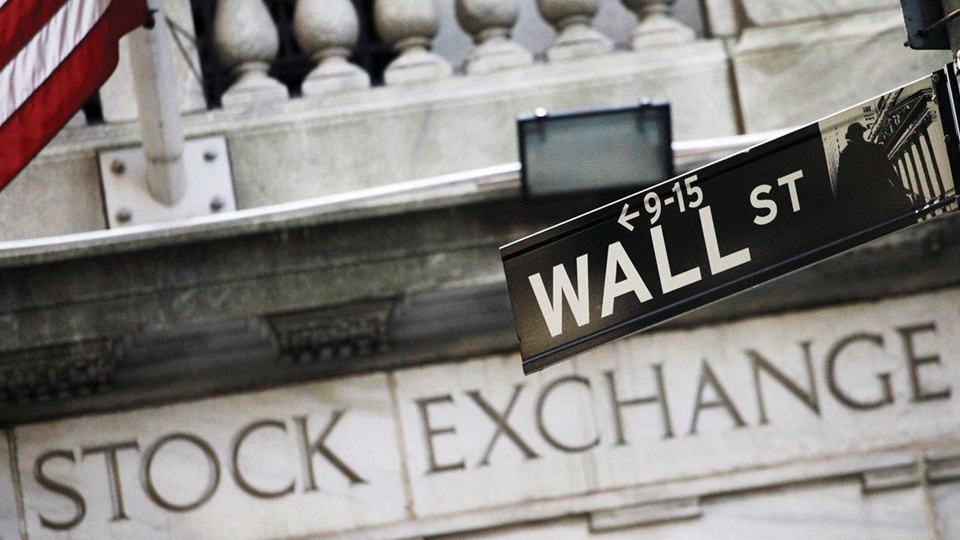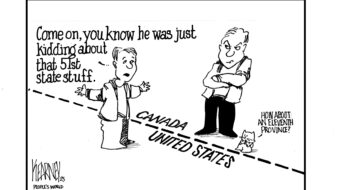
Wall Street is bullish on the Trump Agenda. Since Election Day, stocks have risen some 9 percent. In turn, the Trump Agenda is bullish on Wall Street. Having campaigned against Wall Street bankers and “the establishment” during the campaign, the Trump team has rushed back to them, fully embracing their neoliberal platform.
Neoliberalism – the main tenets of which call for austerity, deregulation, privatization, and “free trade” – is the economic policy and system of ideas that has dominated both Republican and Democratic administrations since the time of Ronald Reagan.
Trump, in most respects, is one of its foremost advocates. In fact, I’ve heard this administration’s policies referred to as “neoliberalism on crack.”
Want budget cuts? Trump plans to cut some $10.5 trillion from the federal budget over the next decade. The departments of Energy, Commerce, Justice and State, as well as the Environmental Protection Agency (EPA), will all undergo significant retrenchment with some slated for complete elimination. The National Endowment for the Arts, the National Endowment for the Humanities, and institutions supporting scientific research, among others, will disappear as line items.
Think there are too many regulations? Eliminating rules and laws governing big business is at the heart of Trump’s economic policy, much to Wall Street’s delight. At his first meeting with heads of major corporations, Trump outlined an executive order mandating “one for two,” meaning that for every one regulation introduced, two existing ones will have to be eliminated.
But more than that, the Trump administration’s bigger plan is to get rid of nearly the entire regime of regulations put in place by Obama and even his Republican predecessors.
Here are some of the kinds of regulations Trump wants to gut:
- Oil companies no longer have to report payments to foreign governments, a rule designed to prevent bribery.
- Prepaid debit cards will no longer have overdraft protection along with clear information detailing their use.
- Coal corporations will not be restricted from polluting streams nor required to repair environmental damage once it has occurred.
Think that’s bad? Those are just the tip of the iceberg. Take drug policy, for example. Trump wants to loosen the Food and Drug Administration’s long-standing testing protocols that ensure drugs are safe and effective – rules that have been in place since 1962. Such policies are so rigorous that 92 percent of all drugs submitted for review fail to pass the tests. Now Trump wants to allow drugs to be sold to patients before their safety and effectiveness has been proven.
Among the chief targets of the deregulation drive are three bills passed by Congress: Sarbanes-Oxley, Dodd-Frank, and Obamacare. Sarbanes-Oxley was passed after the Enron collapse and put in place uniform accounting procedures. Dodd-Frank was passed after the 2008 subprime mortgage crisis and established the Consumer Financial Protection Bureau along with the Volcker Rule which prohibits the kind of trading that led to Great Recession. As you know, repealing and replacing Obamacare was seen to be the GOP’s top legislative priority, but it seems they’ve yet to come up with proposals for doing either.
Privatization is another key plank in Trump’s program. Topping the list in this regard is the public school system. Witness his pick for secretary of education, Betsy DeVos, who in her first meeting at a D.C. public school after confirmation used the occasion to discuss “school choice.”
Also under consideration for privatization are the country’s air traffic control system, public broadcasting, and the Veterans Administration. Even the federal hiring freeze has a privatization imperative behind it, as work formerly done by government employees will now have to be contracted out to private companies. And it could also serve as an attack of public employee unions.
Indeed, an attack on unions in the form of a national right-to-work law is at the center of the Republican agenda. In the name of labor flexibility, Trump and the GOP will attempt to end collective bargaining, prohibit the right to strike, gut pensions, and lower wages.
It’s important to keep in mind that the goal of the neoliberal agenda – be it austerity, privatization, or deregulation – is to subject the working class more and more to market forces, remove investor and business restrictions by rewriting the social contract. The goal? Higher profits. Indeed, the highest profit possible.
This includes the issue of trade, which is one piece of Trump’s program that does not fit nicely into neoliberal prescriptions which have long favored international trade pacts like NAFTA and the TPP. Trump campaigned on repealing the TPP and soon after taking office, the GOP-dominated Congress did just that.
At this juncture, however, it is difficult to estimate what will replace the TPP, as it is likely there will be considerable opposition to tariffs should Trump advance protectionist measures. Consider also that the GOP in the House and Senate were largely backers of the trade pacts.
Still, it’s important to point out that Trump’s opposition to TPP makes him no less a neoliberal. He may have a nationalist bent when it comes to trade, but he’s still clearly in the neoliberal club.










